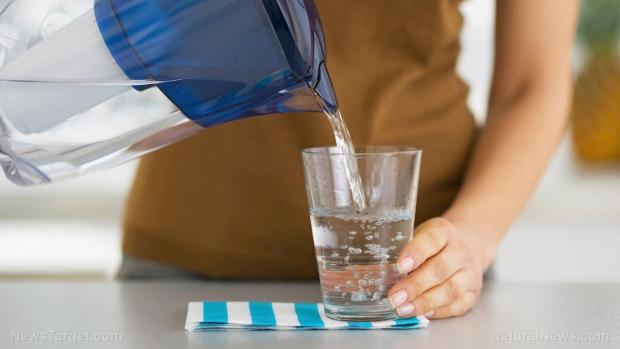
Breaking News
 Alex Jones Answers The Question: Is President Trump Preparing To Plunge America Into Martial Law?!
Alex Jones Answers The Question: Is President Trump Preparing To Plunge America Into Martial Law?!
 JUST IN: Texas Target Shooter Identified - Three People Fatally Shot, Including Child
JUST IN: Texas Target Shooter Identified - Three People Fatally Shot, Including Child
 Dana White Announces the White House Will Host a UFC Cage Fight
Dana White Announces the White House Will Host a UFC Cage Fight
 Texas Senate Officially PASSES New Congressional Map - Democrats STORM OUT in Protest (VIDEO)
Texas Senate Officially PASSES New Congressional Map - Democrats STORM OUT in Protest (VIDEO)
Top Tech News
 3D printing set to slash nuclear plant build times & costs
3D printing set to slash nuclear plant build times & costs
 You can design the wheels for NASA's next moon vehicle with the 'Rock and Roll Challenge
You can design the wheels for NASA's next moon vehicle with the 'Rock and Roll Challenge
 'Robot skin' beats human reflexes, transforms grip with fabric-powered touch
'Robot skin' beats human reflexes, transforms grip with fabric-powered touch
 World's first nuclear fusion plant being built in US to power Microsoft data centers
World's first nuclear fusion plant being built in US to power Microsoft data centers
 The mitochondria are more than just the "powerhouse of the cell" – they initiate immune...
The mitochondria are more than just the "powerhouse of the cell" – they initiate immune...
 Historic Aviation Engine Advance to Unlock Hypersonic Mach 10 Planes
Historic Aviation Engine Advance to Unlock Hypersonic Mach 10 Planes
 OpenAI CEO Sam Altman Pitches Eyeball-Scanning World ID to Bankers
OpenAI CEO Sam Altman Pitches Eyeball-Scanning World ID to Bankers
 New 3D-printed titanium alloy is stronger and cheaper than ever before
New 3D-printed titanium alloy is stronger and cheaper than ever before
 What is Unitree's new $6,000 humanoid robot good for?
What is Unitree's new $6,000 humanoid robot good for?
 "No CGI, No AI, Pure Engineering": Watch Raw Footage Of 'Star Wars'-Style Speeder
"No CGI, No AI, Pure Engineering": Watch Raw Footage Of 'Star Wars'-Style Speeder
Simple and effective ways to purify your water during emergencies

(Natural News) Say you're already seeing the onset of a disaster and the situation is forcing you and your family to bug out. There may be some others who want to join you. The immediate problem that comes up is the amount of drinking water for everyone on board. With your perilous journey ahead, it may be difficult to simply carry an adequate amount. How will you ensure that everyone, including yourself, will have enough water to drink until you arrive at a bug-out shelter? (h/t to MDCreekmore.com)
Purifying water using chemicals
One of the most common ways of purifying water is using unscented household bleach. Make sure you use a brand with no scents or additives.
Here is a simple formula for using bleach to purify water:
Put eight (8) drops (1/8 teaspoon) per gallon / four (4) liters of water. Let stand for 20 minutes. Repeat if water does not smell of chlorine.
Caution: Only do this twice (a total of 16 drops).
It's important to remember that bleach does have some problems. For one, it has a limited shelf life (six months to two years). Second, it's messy and nasty to clean up if spilled.
The limited shelf life of bleach poses a problem when packing a BOB (bug-out bag). A more economical alternative is to use "pool shock," a common ingredient used to make pools safe for swimming. It is available at your local pool supply store or online. Make sure that calcium hypochlorite is the only active ingredient in the product and that it contains no added algicides or fungicides. Anything that has additives in it can seriously endanger everyone, including yourself.
Here is a simple formula for using pool shock to purify water:
Mix one (1) heaping teaspoon (about ¼ ounce) into two (2) gallons of water. The mixture will produce a chlorine solution of approximately 500 mg/L since the available chlorine in calcium hypochlorite is equal to 65 percent of its weight.
To treat water, add one (1) part of chlorine solution per 100 parts of water. This is roughly equal to adding 1 pint (16 oz.) of stock chlorine per 12.5 gallons of water. The chlorine solution can purify a total of 200 gallons of water.
This stock solution also has a limited shelf life, so you should only prepare it when you need it. Generally, dry chemicals like pool shock will last for two to three years if stored properly. Keep it in an airtight container, store it in a cool, dry, dark location, and don't allow temperature fluctuations. (Related: Do you have a safe source of water for a SHTF situation? Top 5 water purification mistakes.)
Pool shock in one-pound bags absorbs moisture from humid air and can dissolve in 12 to 24 months. For longer-term storage, re-pack into Ziploc bags or buy chlorine granules sold in buckets.



